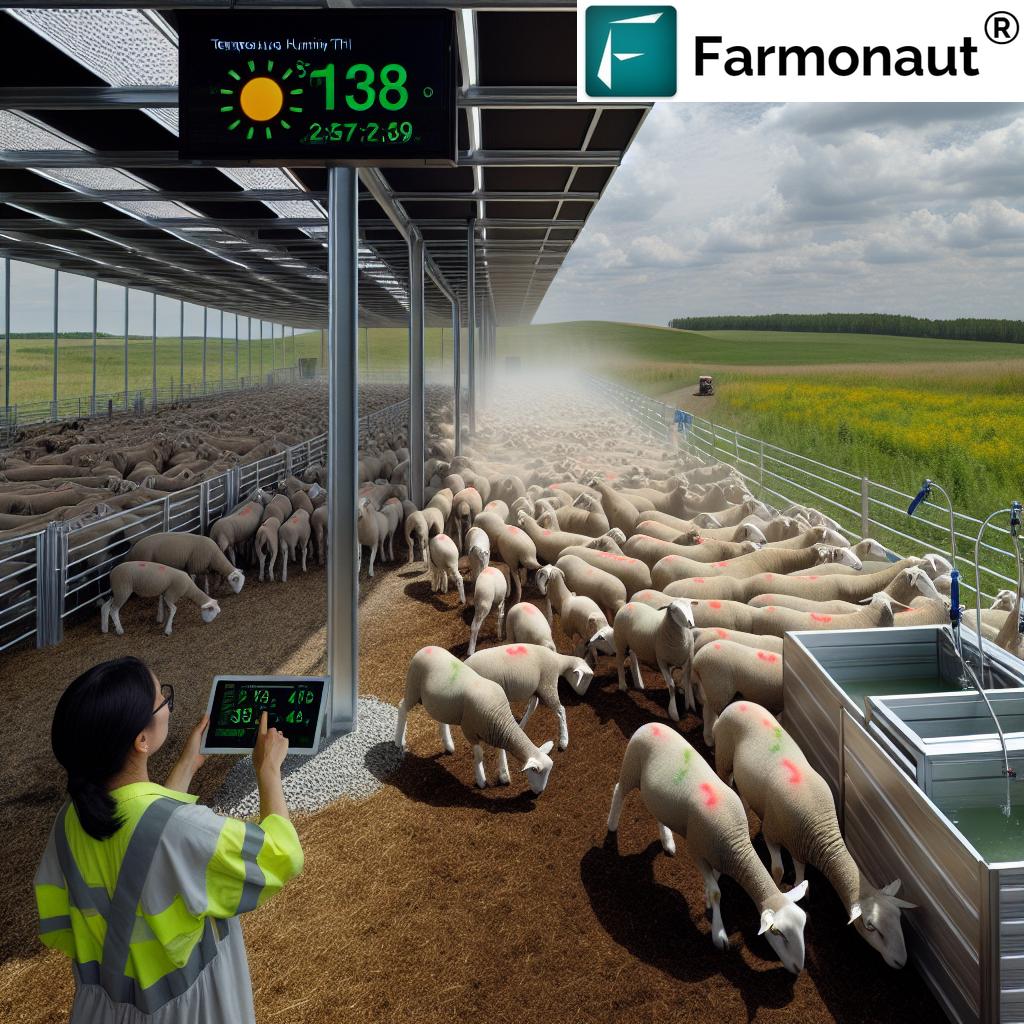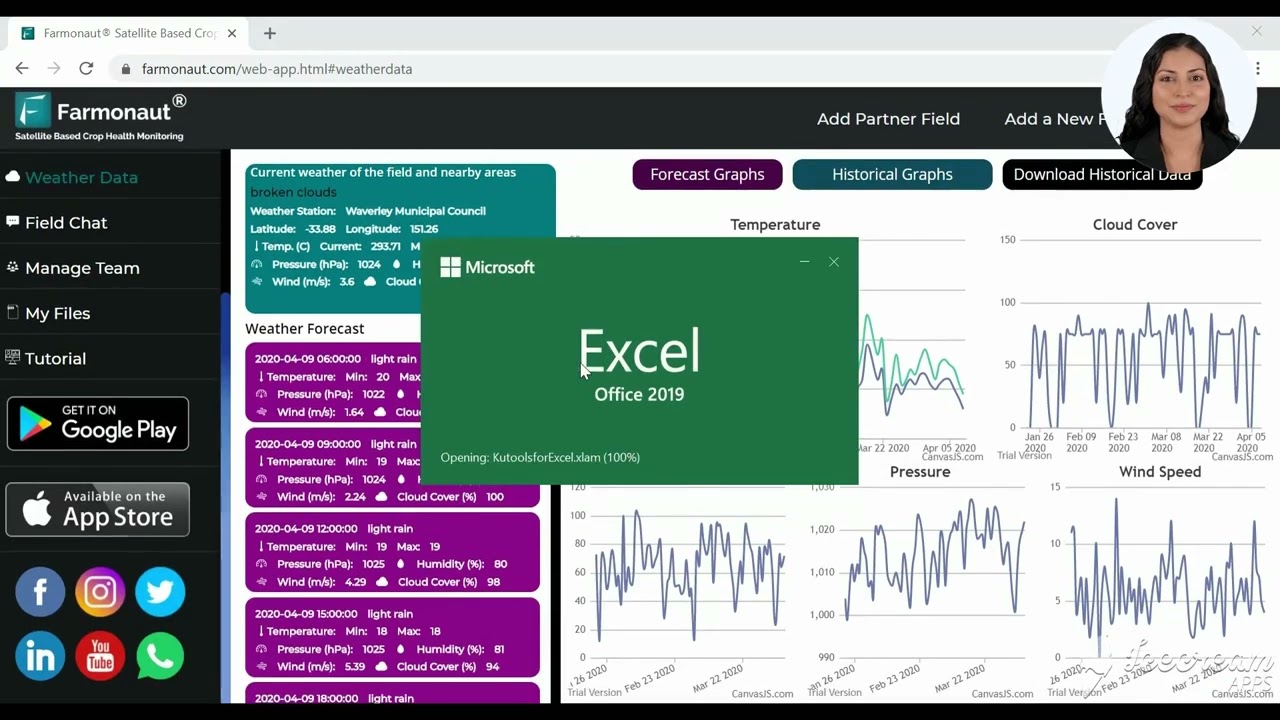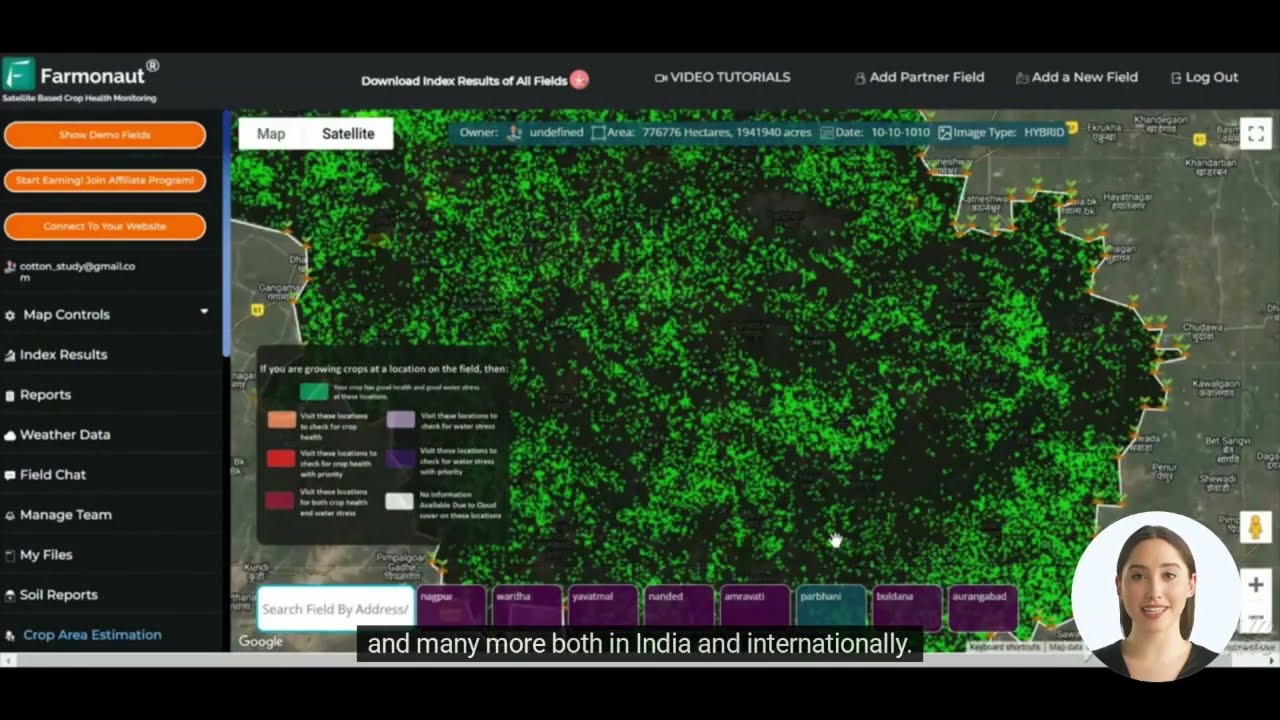10 Essential Tips for Managing Heat Stress in Sheep and Goats: A Canadian Farmer’s Guide to Summer Animal Care
“The Temperature Humidity Index (THI) is a crucial tool for assessing heat stress risk in sheep and goats.”
As Canadian farmers, we understand the unique challenges that come with managing livestock during our hot summer months. Heat stress in sheep and goats is a significant concern that can impact animal welfare and productivity. In this comprehensive guide, we’ll explore ten essential tips for managing heat stress in your small ruminants, ensuring their health and comfort throughout the scorching days ahead.

Before we dive into our tips, it’s essential to understand the impact of heat stress on sheep and goats. These animals are particularly susceptible to high temperatures, which can lead to reduced feed intake, decreased milk production in lactating animals, and even mortality in severe cases. By implementing proper management strategies, we can mitigate these risks and ensure the well-being of our livestock.
1. Recognize the Signs of Heat Stress
The first step in managing heat stress is being able to identify it quickly. Here are some key signs to watch for in your sheep and goats:
- Rapid panting or breathing
- Excessive salivation
- Reduced activity or lethargy
- Seeking shade or crowding in shaded areas
- Decreased feed intake
In severe cases, you may observe:
- Open-mouth breathing with extended neck
- Weakness or inability to stand
- Elevated rectal temperature (above 40°C or 104°F)
Early detection is crucial for preventing more serious health issues. Regular monitoring of your flock or herd during hot weather is essential.
2. Provide Adequate Shade and Shelter
One of the most effective ways to combat heat stress is by ensuring your animals have access to ample shade. Natural shade from trees is ideal, but if this isn’t available, consider constructing artificial shade structures. These can be simple yet effective, such as:
- Portable shade cloths
- Temporary shelters made from reflective materials
- Permanent structures with well-ventilated roofs
Remember, shade not only reduces direct sun exposure but also lowers the ambient temperature by several degrees. This can make a significant difference in your animals’ comfort levels.
3. Ensure Access to Clean, Cool Water
Hydration is critical in preventing heat stress. Sheep and goats will increase their water intake during hot weather, so it’s essential to provide an abundant supply of clean, cool water. Consider these strategies:
- Place water troughs in shaded areas to keep the water cool
- Clean and refill water containers regularly to prevent algae growth
- Use larger troughs to ensure an adequate water supply throughout the day
- Consider adding electrolytes to the water during extreme heat events
Remember, the location of water sources is crucial. Place them strategically around grazing areas to encourage regular drinking.
4. Adjust Feeding Practices
Heat stress can significantly reduce feed intake in sheep and goats. To maintain proper nutrition and minimize the heat generated by digestion, consider these feeding strategies:
- Shift feeding times to cooler parts of the day (early morning or late evening)
- Increase the energy density of the diet to compensate for reduced intake
- Provide fresh, high-quality forage to encourage consumption
- Consider adding fat to the diet to increase energy without increasing heat production
It’s also important to ensure that feed doesn’t spoil in the heat. Remove uneaten feed promptly to maintain freshness and palatability.
5. Implement Strategic Grazing Management
Grazing management plays a crucial role in mitigating heat stress. Consider these techniques:
- Practice rotational grazing to ensure access to fresh pasture
- Allow grazing during cooler hours (early morning or late evening)
- Provide access to paddocks with natural shade
- Consider night grazing during extreme heat waves
By adjusting your grazing schedule, you can help your animals maintain their feed intake while avoiding the hottest parts of the day.
“Sheep and goats can exhibit up to 5 signs of heat stress, ranging from mild panting to severe respiratory distress.”
6. Utilize Cooling Methods
In addition to shade and water, there are several cooling methods you can employ to help your sheep and goats beat the heat:
- Install fans in barns or shelters to improve air circulation
- Use misting systems in shaded areas (ensure proper drainage to prevent wet bedding)
- Provide cool, damp sand for animals to lie on
- Consider shearing sheep before the hottest part of summer
Remember, while shearing can help sheep stay cooler, it’s important to protect newly shorn animals from sunburn. Provide extra shade or consider using sunblock on sensitive areas.

7. Monitor and Manage the Temperature Humidity Index (THI)
The Temperature Humidity Index (THI) is a valuable tool for assessing heat stress risk in livestock. It combines temperature and relative humidity to provide a more accurate picture of how the weather affects your animals. Here’s a table to help you understand and manage THI:
| THI Range | Risk Level | Signs of Heat Stress | Management Strategies |
|---|---|---|---|
| <70 | Low | Normal behavior | – Ensure access to shade and water – Monitor for changes |
| 70-75 | Moderate | – Increased respiration rate – Seeking shade |
– Provide additional shade – Increase water availability – Consider adjusting feeding times |
| 75-80 | High | – Rapid panting – Reduced feed intake – Crowding in shaded areas |
– Implement cooling methods (fans, misters) – Adjust diet for higher energy density – Consider night grazing |
| >80 | Severe | – Open-mouth breathing – Lethargy or weakness – Possible mortality risk |
– Implement all cooling strategies – Provide electrolytes – Consider moving animals to cooler locations – Monitor closely for signs of distress |
By monitoring the THI and implementing appropriate management strategies, you can proactively protect your animals from heat stress.
8. Consider Breed Selection and Genetic Factors
When planning for long-term heat stress management, consider the role of genetics in heat tolerance. Some breeds of sheep and goats are naturally more heat-resistant than others. For Canadian farmers, this might mean:
- Incorporating heat-tolerant breeds into your flock or herd
- Selecting for animals with physical characteristics that aid in heat dissipation (e.g., less wool cover, larger ears in goats)
- Breeding programs that focus on heat tolerance as a trait
While not a short-term solution, genetic selection can play a significant role in creating a more resilient flock or herd over time.
9. Implement Stress Reduction Techniques
Reducing overall stress can help animals better cope with heat. Consider these stress reduction techniques:
- Minimize handling and transportation during the hottest parts of the day
- Avoid routine procedures (like vaccinations or hoof trimming) during heat waves
- Provide a calm environment with minimal disturbances
- Ensure adequate space to prevent overcrowding
Remember, any additional stress can compound the effects of heat stress, making it harder for animals to cope.
10. Utilize Technology for Monitoring and Management
Modern agricultural technology can be a powerful tool in managing heat stress. Consider incorporating these technologies into your farm management:
- Weather monitoring systems to track temperature and humidity
- Automated misting or cooling systems
- Remote monitoring cameras to observe animal behavior
- Precision agriculture tools for pasture management
At Farmonaut, we offer advanced satellite-based farm management solutions that can aid in monitoring crop health, soil moisture, and other critical factors that impact your livestock’s environment. Our platform provides real-time insights that can help you make informed decisions about grazing management and resource allocation.
By leveraging technology, you can stay ahead of potential heat stress issues and ensure the best possible care for your sheep and goats.
Conclusion: Proactive Management for Healthy Livestock
Managing heat stress in sheep and goats requires a proactive and multifaceted approach. By implementing these ten essential tips, Canadian farmers can significantly reduce the risk of heat-related issues in their flocks and herds. Remember, the key to successful heat stress management lies in preparation, observation, and timely action.
As we face increasingly unpredictable weather patterns, it’s crucial to stay informed about the latest research and best practices in livestock management. Utilizing resources like Farmonaut’s satellite-based monitoring tools can provide valuable insights into your farm’s conditions, helping you make data-driven decisions to protect your animals’ health and productivity.
By prioritizing animal welfare and implementing sustainable livestock practices, we can ensure that our sheep and goats not only survive but thrive during the hot summer months. Let’s work together to create resilient, productive, and healthy livestock operations across Canada.
FAQs
Q: How does heat stress affect milk production in lactating sheep and goats?
A: Heat stress can significantly reduce milk production in lactating animals. The decrease in feed intake combined with the energy expended to cool the body leads to a drop in milk yield and can also affect milk composition.
Q: Are horned sheep and goats better at coping with heat stress?
A: Contrary to popular belief, horns don’t provide a significant advantage in heat dissipation. In fact, some studies suggest that polled (hornless) animals may be slightly better at coping with heat stress due to increased surface area for heat loss.
Q: How can I modify my farm’s infrastructure to better manage heat stress?
A: Consider installing shade structures, improving ventilation in barns, and creating dedicated cooling areas with fans or misters. Additionally, ensure easy access to clean water sources throughout your pastures and paddocks.
Q: What role does soil health play in managing heat stress for grazing animals?
A: Healthy soil promotes better pasture growth, which can provide more natural shade and cooler ground temperatures. Implementing sustainable grazing practices and soil management techniques can indirectly help in managing heat stress.
Q: How can I use Farmonaut’s technology to improve my heat stress management strategies?
A: Farmonaut’s satellite-based crop monitoring and AI advisory systems can help you track pasture health, soil moisture levels, and weather patterns. This information can guide your grazing management decisions and help you anticipate and prepare for heat stress conditions.
For more information on how Farmonaut can support your farm management efforts, explore our services:

Android App

iOS App


















